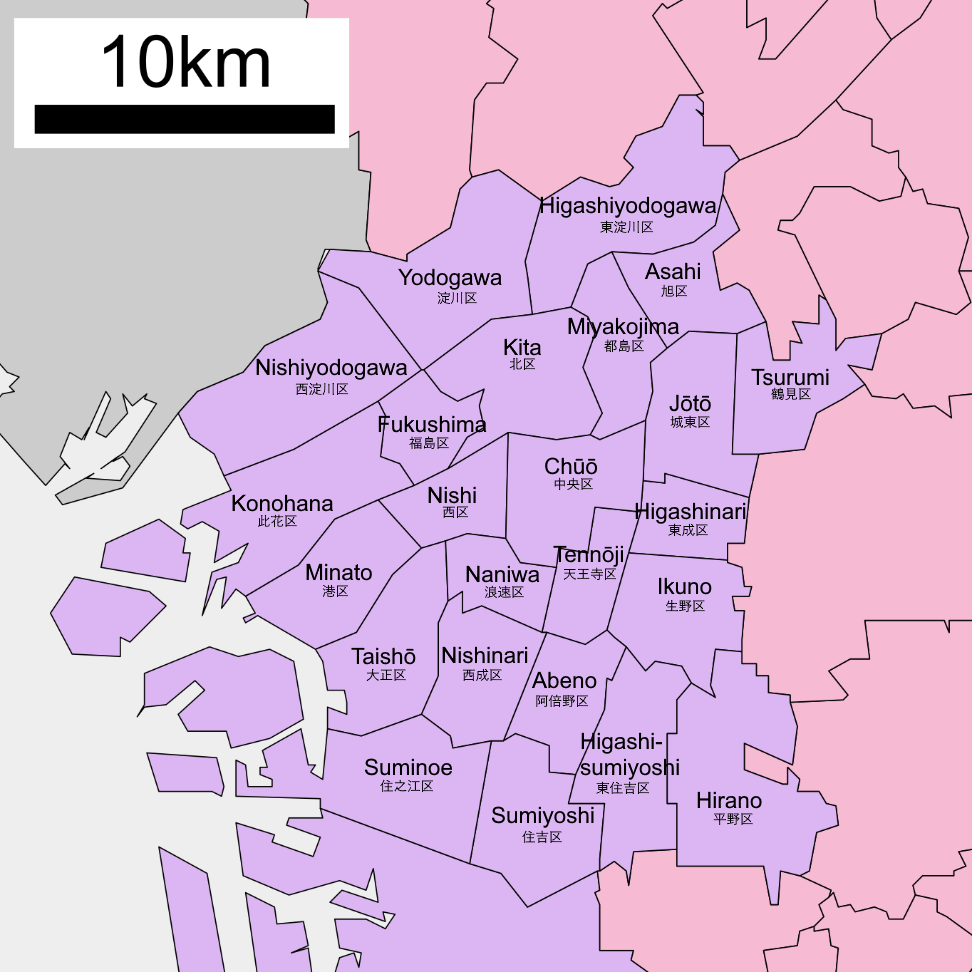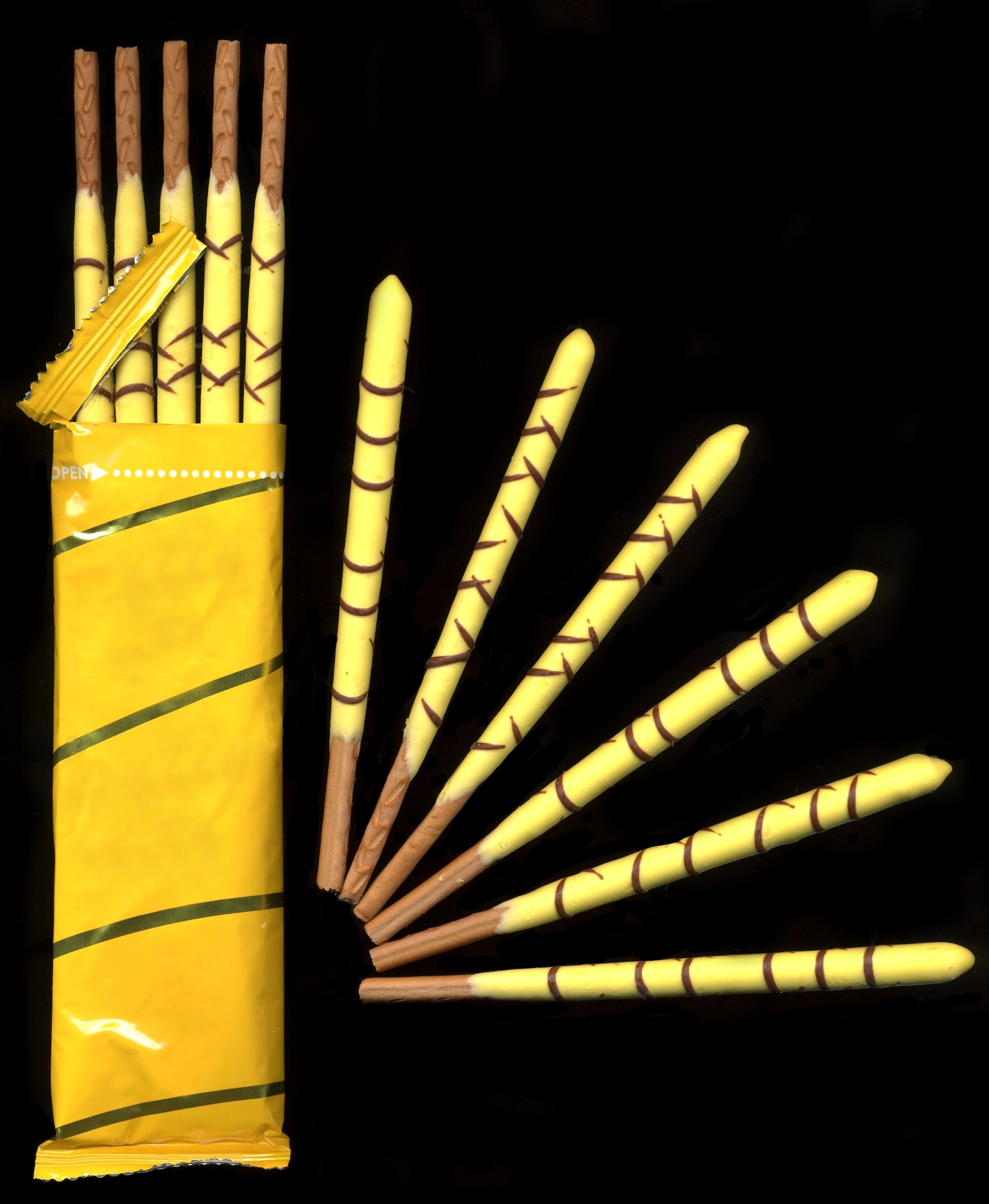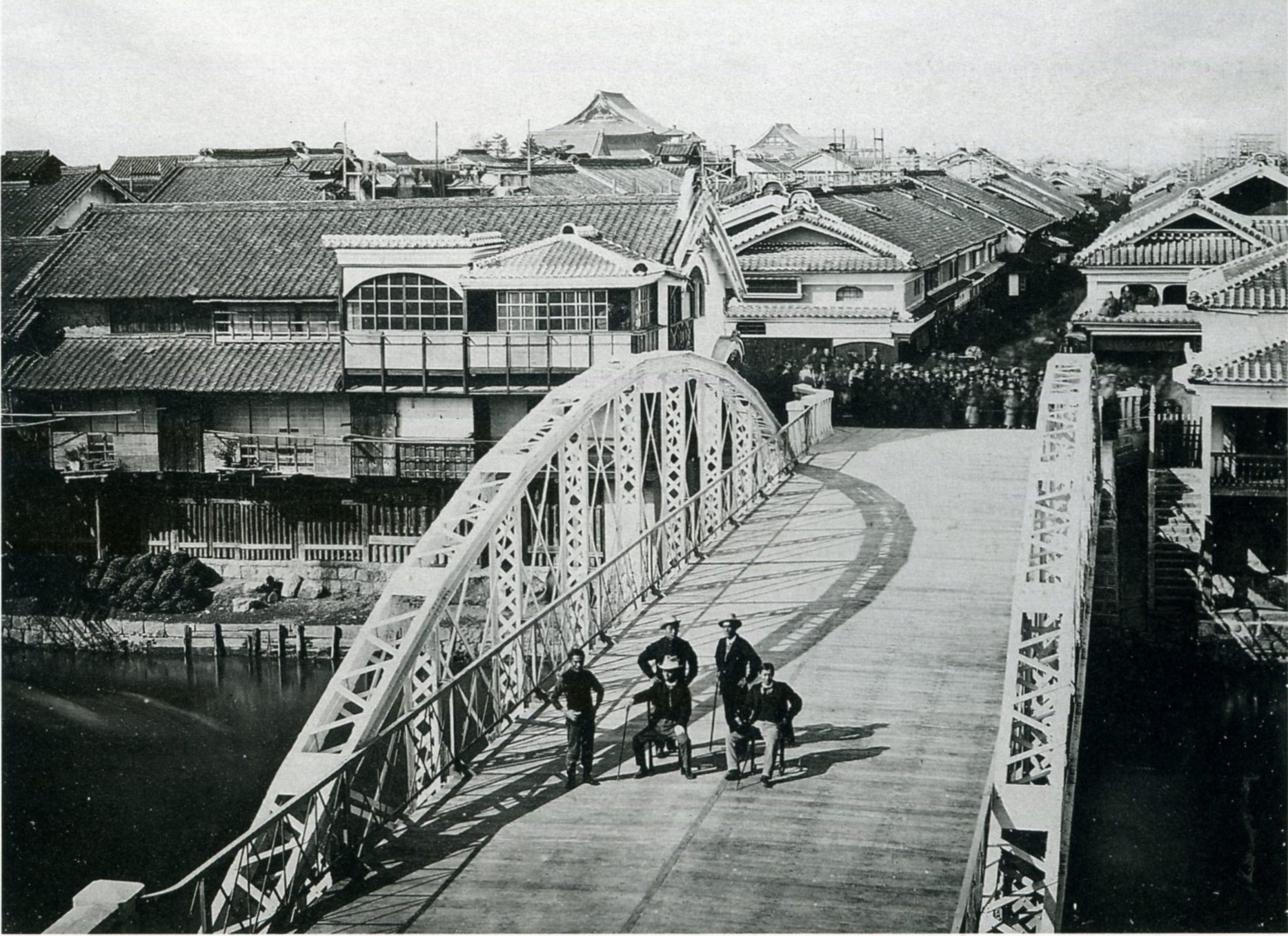|
Dōtonbori
is one of the principal tourist destinations in Osaka, Japan, running along the Dōtonbori canal from Dōtonboribashi Bridge to Nipponbashi Bridge in the Namba district of the city's Chuo ward. Historically a theater district, it is now a popular nightlife and entertainment area characterized by its eccentric atmosphere and large illuminated signboards. One of the area's most prominent features, a billboard for confectionery company Glico displaying the image of a runner crossing a finishing line, is seen as an icon of Osaka within Japan. History Origin Dōtonbori traces its history back to 1612, when the administrator of local canals, Nariyasu Dōton, began construction of the canal on the southern edge of Osaka. Nariyasu Dōton was joined by Yasui Jihē, Yasui Kuhē, and Hirano Tōjirō. Construction was interrupted: Yasui Jihē died after an illness and Nariyasu Dōton died during the Siege of Osaka in summer 1615, having fought on the losing side of Toyotomi Hideyori. Yasu ... [...More Info...] [...Related Items...] OR: [Wikipedia] [Google] [Baidu] |
Osaka
is a designated city in the Kansai region of Honshu in Japan. It is the capital of and most populous city in Osaka Prefecture, and the third most populous city in Japan, following Special wards of Tokyo and Yokohama. With a population of 2.7 million in the 2020 census, it is also the largest component of the Keihanshin Metropolitan Area, which is the second-largest metropolitan area in Japan and the 10th largest urban area in the world with more than 19 million inhabitants. Osaka was traditionally considered Japan's economic hub. By the Kofun period (300–538) it had developed into an important regional port, and in the 7th and 8th centuries, it served briefly as the imperial capital. Osaka continued to flourish during the Edo period (1603–1867) and became known as a center of Japanese culture. Following the Meiji Restoration, Osaka greatly expanded in size and underwent rapid industrialization. In 1889, Osaka was officially established as a municipality. The construc ... [...More Info...] [...Related Items...] OR: [Wikipedia] [Google] [Baidu] |
Osaka, Osaka
is a Cities designated by government ordinance of Japan, designated city in the Kansai region of Honshu in Japan. It is the capital of and most populous city in Osaka Prefecture, and the List of cities in Japan, third most populous city in Japan, following Special wards of Tokyo and Yokohama. With a population of 2.7 million in the 2020 census, it is also the largest component of the Keihanshin, Keihanshin Metropolitan Area, which is the List of metropolitan areas in Japan, second-largest metropolitan area in Japan and the 10th List of urban areas by population, largest urban area in the world with more than 19 million inhabitants. Osaka was traditionally considered Japan's economic hub. By the Kofun period (300–538) it had developed into an important regional port, and in the 7th and 8th centuries, it served briefly as the imperial capital. Osaka continued to flourish during the Edo period (1603–1867) and became known as a center of Japanese culture. Following the Meiji R ... [...More Info...] [...Related Items...] OR: [Wikipedia] [Google] [Baidu] |
Midōsuji
Avenue is the primary main street in central Osaka, Japan. It runs north-south, passing Umeda, Nakanoshima, Shinsaibashi, Dōtonbori, Ame-mura, and Namba districts. Underneath the street is the Midōsuji Line subway. Especially in autumn when leaves of the ginkgo roadside trees turn yellow, a beautiful landscape can be seen. Route description Midōsuji becomes the Shinmido-suji in Kita-ku, Osaka, running concurrently with Japan National Route 423. After travelling about to the north it becomes the Minō Toll Road. To the south, Midōsuji becomes the Kishu Highway. History In Edo period, Midosuji was just a narrow street called "". Midōsuji was built in the Taishō period, widening an existing north-south street and extending it to run all the way to Umeda in the north and Namba in the south. Today Midōsuji is an ultra high-class shopping street, housing clothing stores by such brands as Louis Vuitton, Chanel, major hotels, and even an Apple flagship. The area has been r ... [...More Info...] [...Related Items...] OR: [Wikipedia] [Google] [Baidu] |
Glico
, commonly known as just Glico, is a Japanese multinational food processing company headquartered in Nishiyodogawa-ku, Osaka. It does business across 30 countries, in North America, Asia-Pacific and Europe. Overview Ezaki Glico's primary business is manufacturing confectionery products such as chocolate, chips, chewing gums and ice cream, and dairy products. Additionally, Glico manufactures processed foods such as curry stocks and retort takikomi gohan pouch, and dietary supplement products. Glico's main competitors are Meiji Seika, Lotte, Morinaga, Fujiya and in confectionery business, and House Foods, Meiji and S&B Foods in processed food business. Ezaki Glico's main financier was Sanwa Bank, which was merged into the Bank of Tokyo-Mitsubishi UFJ. Ezaki Glico is a member of Midori Kai, a group of companies whose main financier was Sanwa Bank. Corporate message *"Good Taste and Good Health" (おいしさと健康, 1971—1992) *"A Wholesome Life in the Best of Tas ... [...More Info...] [...Related Items...] OR: [Wikipedia] [Google] [Baidu] |
Shinsaibashi
is a district in the Chūō-ku ward of Osaka, Japan and the city's main shopping area. At its center is , a covered shopping street, that is north of Dōtonbori and Sōemonchō, and parallel and east of Mido-suji street. Associated with Shinsaibashi, and west of Mido-suji street, is Amerika-mura, an American-themed shopping area and center of Osaka's youth culture. Major stores and boutiques concentrates are found around the area. Shinsaibashi is easily accessed via the subway. History Like many place names in Osaka, the Shinsaibashi shopping district gets its name from one of the many "Machi-bashi" (town bridges) that were built and managed by the local merchants. Shinsaibashi was a much-loved landmark bridge that spanned the Nagahori-gawa canal. In 1622, at the time of the excavation of the Nagahori-gawa canal, the original 35 metres-long and 4 metres-wide wooden bridge was built by Shinsai Okada, one of the four merchants who dug the Nagahori-gawa canal. The bridge was ... [...More Info...] [...Related Items...] OR: [Wikipedia] [Google] [Baidu] |
Sōemonchō
is an entertainment district in Chūō-ku, one of the wards of Osaka, Japan. The district borders on two other entertainment districts, Shinsaibashi to the north and Dōtonbori to the south. Sōemonchō has a high concentration of bars, restaurants and nightclubs. Sōemonchō is featured in the song "Sōemonchō Blues" (宗右衛門町ブルース) by Katsuji Heiwa and Dark Horse, which was released in 1972 and became a major hit in Japan, selling two million copies. See also *Shinsaibashi *Dōtonbori is one of the principal tourist destinations in Osaka, Japan, running along the Dōtonbori canal from Dōtonboribashi Bridge to Nipponbashi Bridge in the Namba district of the city's Chuo ward. Historically a theater district, it is now a popula ... References {{DEFAULTSORT:Soemoncho Entertainment districts in Japan Restaurant districts and streets in Japan Tourist attractions in Osaka Shopping districts and streets in Japan Geography of Osaka ... [...More Info...] [...Related Items...] OR: [Wikipedia] [Google] [Baidu] |
Takoyaki
is a ball-shaped Japanese snack made of a wheat flour-based batter and cooked in a special molded pan. It is typically filled with minced or diced octopus An octopus ( : octopuses or octopodes, see below for variants) is a soft-bodied, eight- limbed mollusc of the order Octopoda (, ). The order consists of some 300 species and is grouped within the class Cephalopoda with squids, cuttle ... (''tako''), tempura scraps (''tenkasu''), beni shoga, pickled ginger (''beni shoga''), and Welsh onion, green onion (''negi''). The balls are brushed with takoyaki sauce (similar to Worcestershire sauce) and mayonnaise, and then sprinkled with green laver (''aonori'') and shavings of dried bonito (''katsuobushi''). ''Yaki'' comes from , which is one of the cooking methods in Japanese cuisine, meaning 'to grill', and can be found in the names of other dishes in Japanese cuisine such as ''okonomiyaki'' and ''ikayaki'' (other famous Osaka, Osakan dishes). Basically, it is eaten ... [...More Info...] [...Related Items...] OR: [Wikipedia] [Google] [Baidu] |
Nipponbashi
is a shopping district of Naniwa Ward, Osaka, Japan. The area is centered along Sakaisuji Avenue, extending from the Ebisu-chō Interchange of the Hanshin Expressway in the south, to Nansan-dōri (just east of Nankai Namba Station) in the north. Known colloquially as "Den-Den Town," Nipponbashi is known for its many shops which specialize in furniture, tools, and "otaku" interests such as electronics, anime, manga, and collectibles. Nipponbashi is often compared to Akihabara Electric Town, its equivalent (in terms of focus) in Tokyo. Although written with the same kanji 日本橋 in Japanese, Nihonbashi in Chūō, Tokyo is a different place and has a different pronunciation. History During the Edo period, this district was known as a , called . In 1792 and 1872, the Osaka municipal government renamed this district from Nagamachi to Nipponbashi. During the Meiji and Taishō periods, many second-hand bookshops opened there. After World War II, many consumer electronics ... [...More Info...] [...Related Items...] OR: [Wikipedia] [Google] [Baidu] |
Namba
is a district of Osaka, Japan. It is located in Chūō and Naniwa wards. Namba is regarded as the center of so-called ''Minami'' ("South") area of Osaka. Its name is one of variations on the former name of Osaka, '' Naniwa''. Namba is best known as the city's main south-central railway terminus: JR, Kintetsu, Nankai, Hanshin, and three Osaka Metro subway lines have stations there. Some of the most famous images of Osaka, including the Glico Man and the Kani Doraku Crab, are located around the Dōtonbori canal in Namba. Namba is also known as an entertainment district, and hosts many of the city's most popular bars, restaurants, nightclubs, arcades, and pachinko parlors. The area is also known for shopping, with the Takashimaya department store (for older styles) and the sprawling underground Namba City shopping mall (for newer styles). Namba Parks is a new development consisting of a high office building, called "Parks Tower," and a 120-tenant shopping mall with roo ... [...More Info...] [...Related Items...] OR: [Wikipedia] [Google] [Baidu] |
Japan
Japan ( ja, 日本, or , and formally , ''Nihonkoku'') is an island country in East Asia. It is situated in the northwest Pacific Ocean, and is bordered on the west by the Sea of Japan, while extending from the Sea of Okhotsk in the north toward the East China Sea, Philippine Sea, and Taiwan in the south. Japan is a part of the Ring of Fire, and spans Japanese archipelago, an archipelago of List of islands of Japan, 6852 islands covering ; the five main islands are Hokkaido, Honshu (the "mainland"), Shikoku, Kyushu, and Okinawa Island, Okinawa. Tokyo is the Capital of Japan, nation's capital and largest city, followed by Yokohama, Osaka, Nagoya, Sapporo, Fukuoka, Kobe, and Kyoto. Japan is the List of countries and dependencies by population, eleventh most populous country in the world, as well as one of the List of countries and dependencies by population density, most densely populated and Urbanization by country, urbanized. About three-fourths of Geography of Japan, the c ... [...More Info...] [...Related Items...] OR: [Wikipedia] [Google] [Baidu] |
Japanese Language
is spoken natively by about 128 million people, primarily by Japanese people and primarily in Japan, the only country where it is the national language. Japanese belongs to the Japonic or Japanese- Ryukyuan language family. There have been many attempts to group the Japonic languages with other families such as the Ainu, Austroasiatic, Koreanic, and the now-discredited Altaic, but none of these proposals has gained widespread acceptance. Little is known of the language's prehistory, or when it first appeared in Japan. Chinese documents from the 3rd century AD recorded a few Japanese words, but substantial Old Japanese texts did not appear until the 8th century. From the Heian period (794–1185), there was a massive influx of Sino-Japanese vocabulary into the language, affecting the phonology of Early Middle Japanese. Late Middle Japanese (1185–1600) saw extensive grammatical changes and the first appearance of European loanwords. The basis of the standard dialect moved f ... [...More Info...] [...Related Items...] OR: [Wikipedia] [Google] [Baidu] |
Mascot
A mascot is any human, animal, or object thought to bring luck, or anything used to represent a group with a common public identity, such as a school, professional sports team, society, military unit, or brand name. Mascots are also used as fictional, representative spokespeople for consumer products. In sports, mascots are also used for merchandising. Team mascots are often related to their respective team nicknames. This is especially true when the team's nickname is something that is a living animal and/or can be made to have humanlike characteristics. For more abstract nicknames, the team may opt to have an unrelated character serve as the mascot. For example, the athletic teams of the University of Alabama are nicknamed the Crimson Tide, while their mascot is an elephant named Big Al. Team mascots may take the form of a logo, person, live animal, inanimate object, or a costumed character, and often appear at team matches and other related events, sports mascots are of ... [...More Info...] [...Related Items...] OR: [Wikipedia] [Google] [Baidu] |





